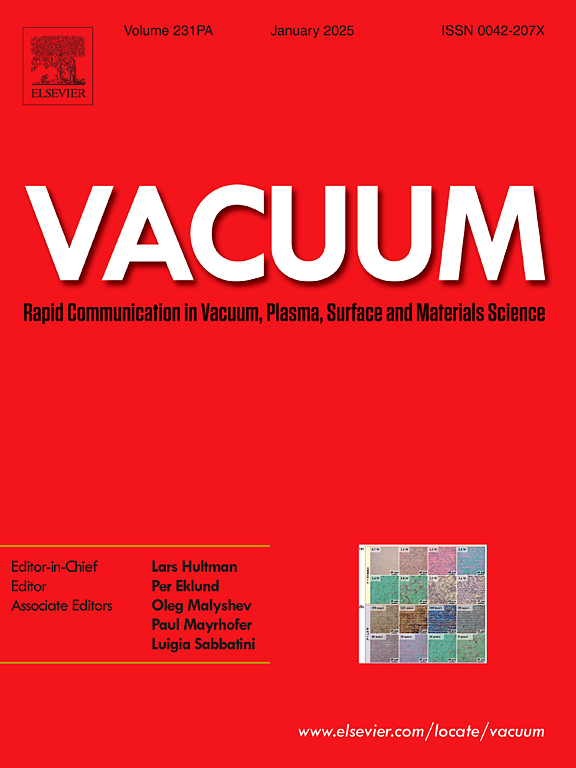Research on strategies for optimizing small-sized ion beam performance to achieve figuring of mid-spatial frequency errors on complex curved mirrors
IF 3.8
2区 材料科学
Q2 MATERIALS SCIENCE, MULTIDISCIPLINARY
引用次数: 0
Abstract
Complex curved mirrors, featuring high design flexibility, strong aberration-correcting capabilities, and compact structures, are widely utilized in modern optical systems. Currently, ion beam figuring has achieved sub-nanometer precision. However, with the growth in the clear aperture and steepness of mirrors, stringent requirements are set for process conditions and polishing tools, and the correction of mid-spatial frequency (MSF) errors using small-sized ion beams faces great challenges. This paper introduces a method for correcting MSF errors using a small-sized ion beam generated by a conical diaphragm, and its geometric design principles are explained with a simulation model. Simulation results show that selecting appropriate geometric dimensions can effectively adjust the processing distance and significantly improve the material removal rate. Using this method, a small-sized ion beam with a full width at half maximum of 1.01 mm and a processing distance of 22.32 mm is obtained, and its peak energy is 29 times that of a traditional flat diaphragm. Finally, the form error of a complex curved mirror with a clear aperture of Φ45–210 mm and a sag difference of 16.9 mm was corrected to 3.55 nm RMS. The proposed method provides theoretical and technical support for the manufacturing of optical components with nanometer-level precision.
优化小尺寸离子束性能以实现复杂曲面镜中频误差计算的策略研究
复杂曲面镜具有设计灵活性高、像差校正能力强、结构紧凑等特点,在现代光学系统中得到了广泛的应用。目前,离子束计算已达到亚纳米级精度。然而,随着反射镜孔径和陡度的增加,对工艺条件和抛光工具提出了严格的要求,利用小尺寸离子束修正中空间频率(MSF)误差面临巨大挑战。本文介绍了一种利用锥形隔膜产生的小尺寸离子束修正MSF误差的方法,并通过仿真模型说明了其几何设计原理。仿真结果表明,选择合适的几何尺寸可以有效调节加工距离,显著提高材料去除率。利用该方法,获得了半峰全宽1.01 mm、加工距离22.32 mm的小尺寸离子束,其峰值能量是传统平膜片的29倍。最后,将净孔径为Φ45-210 mm、凹陷差为16.9 mm的复杂曲面镜的形状误差修正为3.55 nm的RMS。该方法为纳米级精密光学元件的制造提供了理论和技术支持。
本文章由计算机程序翻译,如有差异,请以英文原文为准。
求助全文
约1分钟内获得全文
求助全文
来源期刊

Vacuum
工程技术-材料科学:综合
CiteScore
6.80
自引率
17.50%
发文量
0
审稿时长
34 days
期刊介绍:
Vacuum is an international rapid publications journal with a focus on short communication. All papers are peer-reviewed, with the review process for short communication geared towards very fast turnaround times. The journal also published full research papers, thematic issues and selected papers from leading conferences.
A report in Vacuum should represent a major advance in an area that involves a controlled environment at pressures of one atmosphere or below.
The scope of the journal includes:
1. Vacuum; original developments in vacuum pumping and instrumentation, vacuum measurement, vacuum gas dynamics, gas-surface interactions, surface treatment for UHV applications and low outgassing, vacuum melting, sintering, and vacuum metrology. Technology and solutions for large-scale facilities (e.g., particle accelerators and fusion devices). New instrumentation ( e.g., detectors and electron microscopes).
2. Plasma science; advances in PVD, CVD, plasma-assisted CVD, ion sources, deposition processes and analysis.
3. Surface science; surface engineering, surface chemistry, surface analysis, crystal growth, ion-surface interactions and etching, nanometer-scale processing, surface modification.
4. Materials science; novel functional or structural materials. Metals, ceramics, and polymers. Experiments, simulations, and modelling for understanding structure-property relationships. Thin films and coatings. Nanostructures and ion implantation.
 求助内容:
求助内容: 应助结果提醒方式:
应助结果提醒方式:


